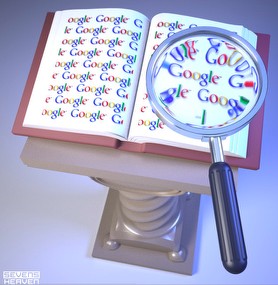After inviting a group of journalists to a sneak preview at its head office, Samsung Electronics Indonesia let us play around with one of its LED TVs.
I said I was interested. “Can I see the largest LED TV you have?” I asked Shinta Wardiastuti from corporate marketing, in my email. After a few days, I received a huge box, almost as large as my refrigerator. Thereafter, courtesy of Samsung Electronics Indonesia, I have been able to watch TV broadcasts, DVD movies and even YouTube on a 55-inch screen.
Yes, a huge 55-inch TV. I almost regretted asking for the biggest model as I had to make space for it in my tiny living room. It will be a relief when they take it back early January, although I will miss it. But I will feel more at ease because not only can I reclaim the space, I will no longer have to worry about protecting this Rp 60 million ($US6,000) item.
Samsung, reportedly the worldwide leader in LCD and LED TVs, currently offers three different series of LED TV. These are the B8000, B7000 and B6000.
The numbers have nothing to do with size. Instead, they indicate their features. The B8000 has the most features. The one that has dominated my living room is the UA55B7000WR.
Setting it up is extremely easy. The TV can be hooked up to a conventional aerial, a TV cable network, a DVD player, a Blu-Ray player — it has the full 1,920 by 1,080 resolution, a PC and a number of other digital media players.
It has two gigabytes of internal memory, it supports USB 2.0 and it can play movies from any equipment using the USB connector. It has an RJ-45 port to connect it to our home network, or we can use an optional wireless adaptor, both DLNA and LAN. It has Samsung’s media player named Medi@2.0, which also supports Internet@TV, the Content Library, USB 2.0 Movie and wireless DLNA.
Incidentally, my wife once refused to use the netbook, saying the screen was too small for her. When I hooked up the same netbook to this LED screen, she still refused it because it was way, way too big!
At first, I could watch any TV broadcasts off the air. It turned out that I had to tell the TV tuner to scan them first. Once the scanning was completed, I could watch local TV broadcasts.
Although I was using an indoor antenna, some of the local stations had sharp images. I did not hook it up to my cable TV decoder because the only location spacious enough for it was too far from the end of the cable.
The TV, which uses SRS TrueSound HD, relies on a pair of down-firing speakers and a subwoofer for audio. But, honestly, you should hook it up to a home theater system to really enjoy the sound.
The infrared remote control, which is also quite large, illuminates when buttons are pressed. It is loaded with functions, but amazingly, it is simple to use for straightforward operation.
One problem with the cable TV services is that the volume levels are not the same across the channels. As we move from one channel to another, we often have to scramble for the volume control button because the sound suddenly becomes very loud. This also happens with lots of commercials, as the stations want to ensure the commercials capture our attention. The good news is that all these three LED TVs have an auto volume leveler.
While the list of specs is more than two pages long, another important feature of the latest LED TVs from Samsung is their slimness. They are less than 3 centimeters thick. They can easily be bolstered on the wall easily.
Samsung even supplies the kit, including the fire resistant cable that is stronger than necessary to sustain the 22.4 kg weight of the LED TV.
The big question now is what makes the LED TV different from LCD TV? Not much. The LCD panel on an LCD TV has many Cold Cathode Fluorescent Lamps (CCFL) tubes behind it to light the display. The LED panel uses Light Emitting Diodes (LEDs) for the same task. The diodes are far more expensive to make, compared with the CCFL, so they are used on the top and bottom of a typical LED screen to provide lighting.
One of the innovations of the Samsung LED TVs is the LEDs are located on all four edges. Samsung calls it “edge-lit LED”. It sounds a simple solution, but the Korean company has deployed almost all of its researchers to develop the technology and design the super-thin LED TV.
Among others, they had to design the Light Guide Panel/Plate (LGP) to direct the light from the LEDs into the transistors in the panel.
In addition, the engineers also had to create Samsung’s own chip, as they were obsessed with the idea of developing the best TV on earth. The results were these three series, each with its own 40-, 46- and 55-inch versions.
Are there real benefits in moving from LCD to LED? There are. First, an LED TV is more energy efficient. Samsung claims that it uses 40 percent less power than a comparable LCD TV. No mercury is used in the production. In terms of picture quality, the LED also has a far better contrast level. This gives us a darker black than what the LCD panel can achieve.
So, if money is not an issue and you are looking for a full HDTV TV, go for a LED TV. You will not be disappointed.





